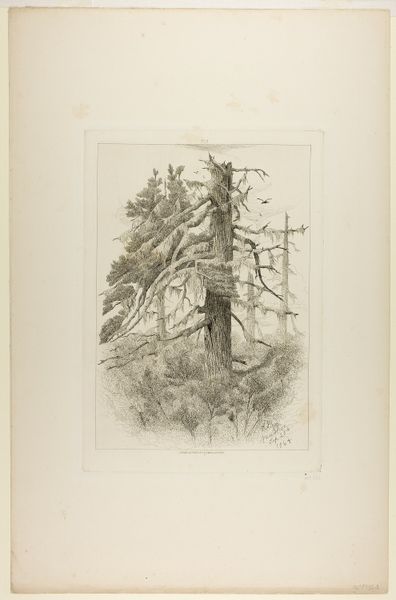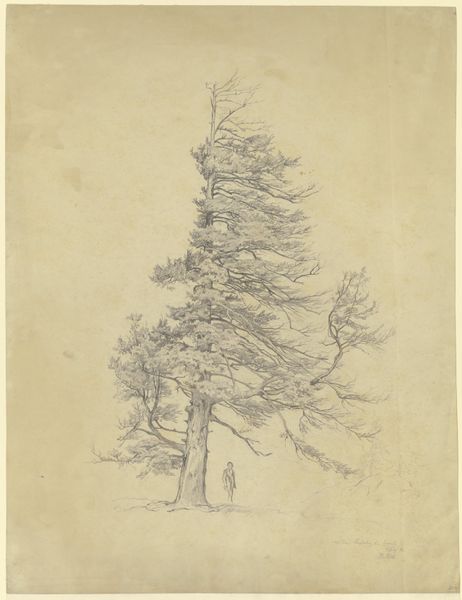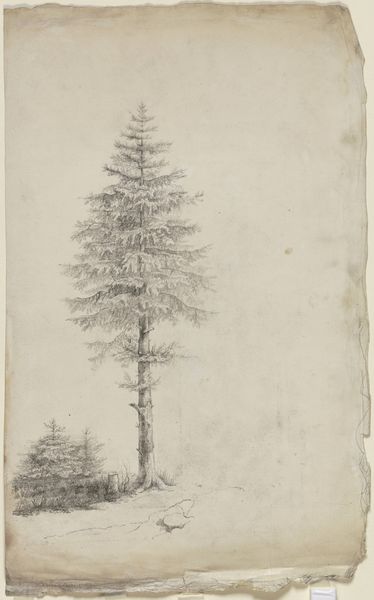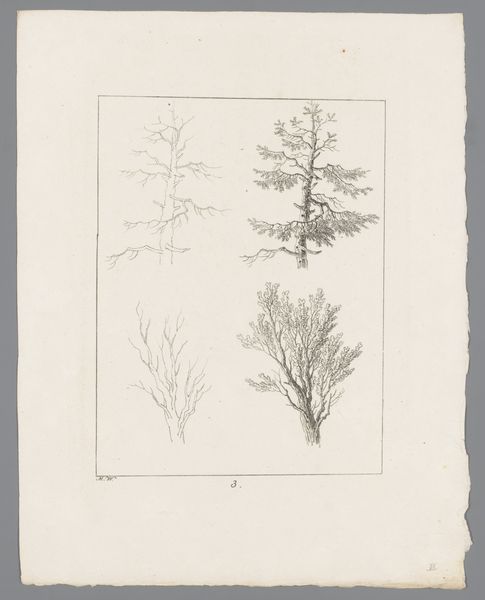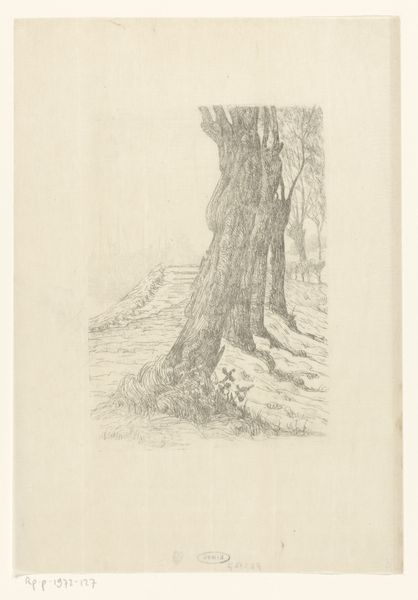![Old Trees at Naushon Island [plate 2] by Robert Swain Gifford](/_next/image?url=https%3A%2F%2Fd2w8kbdekdi1gv.cloudfront.net%2FeyJidWNrZXQiOiAiYXJ0ZXJhLWltYWdlcy1idWNrZXQiLCAia2V5IjogImFydHdvcmtzL2YxNjM3YmY1LWYwZmMtNDQ1NC1hMjdjLTYyOTI4YjA3OTBhMS9mMTYzN2JmNS1mMGZjLTQ0NTQtYTI3Yy02MjkyOGIwNzkwYTFfZnVsbC5qcGciLCAiZWRpdHMiOiB7InJlc2l6ZSI6IHsid2lkdGgiOiAxOTIwLCAiaGVpZ2h0IjogMTkyMCwgImZpdCI6ICJpbnNpZGUifX19&w=3840&q=75)
drawing, print, graphite
#
drawing
# print
#
landscape
#
geometric
#
hudson-river-school
#
line
#
graphite
#
graphite
#
realism
Dimensions: image: 27.7 × 19.1 cm (10 7/8 × 7 1/2 in.) plate: 30.4 × 21.3 cm (11 15/16 × 8 3/8 in.) sheet: 36.5 × 27.7 cm (14 3/8 × 10 7/8 in.)
Copyright: National Gallery of Art: CC0 1.0
Curator: This graphite drawing, a print actually, is Robert Swain Gifford's "Old Trees at Naushon Island," dating to 1865. Editor: My first impression is one of somber dignity. There's a quiet resilience in these old trees, rendered with incredibly delicate lines. It makes you feel like you are standing in a silent cathedral. Curator: Gifford, a key figure in the Hudson River School, captures a very specific environment. Look at the detail – he meticulously renders the textures of the bark and the low shrubs around the trees. There's a real emphasis on portraying the natural resources available and the physical realities of the locale. Consider how these materials were harvested, how the printmaking process itself becomes an extension of Gifford's experience of the land. Editor: Absolutely. Beyond the meticulous execution, I see symbolic weight here. These are old, possibly dying trees. Look at the birds taking flight, suggesting a passing of time, a migration. Trees often function as symbols of life and death, and this drawing really resonates with the romantic idea of nature’s grandeur tinged with melancholy. Curator: Gifford's work, particularly within the Hudson River School context, raises interesting questions about landscape, ownership, and industrial production. Remember, at this time, lithography allowed images like this to circulate widely, democratizing access to landscape views. But also acting as tools for selling an image, almost as an advert for untouched and potentially developable nature. Editor: An interesting contradiction! It highlights the duality of man’s relationship with nature. We see beauty, but also potential resources. Those trees, beautiful in their detail, might represent lumber to someone else, right? I find that inherent conflict intensely moving. Curator: Exactly! The drawing exists within a network of material practices. Everything from the graphite used to create the drawing to the paper and ink to mass printing relates to the world around the landscape itself. Editor: And to carry that thought forward – Gifford is taking these old and naturally deteriorating things and fixing it onto something flat and enduring; it takes on its own life, really. Thanks for highlighting the layers in this work. Curator: My pleasure. It reveals a surprising depth within what at first seems like a very simple depiction.
Comments
No comments
Be the first to comment and join the conversation on the ultimate creative platform.
